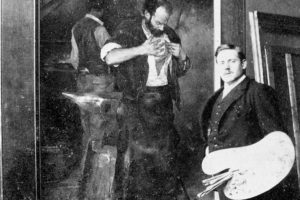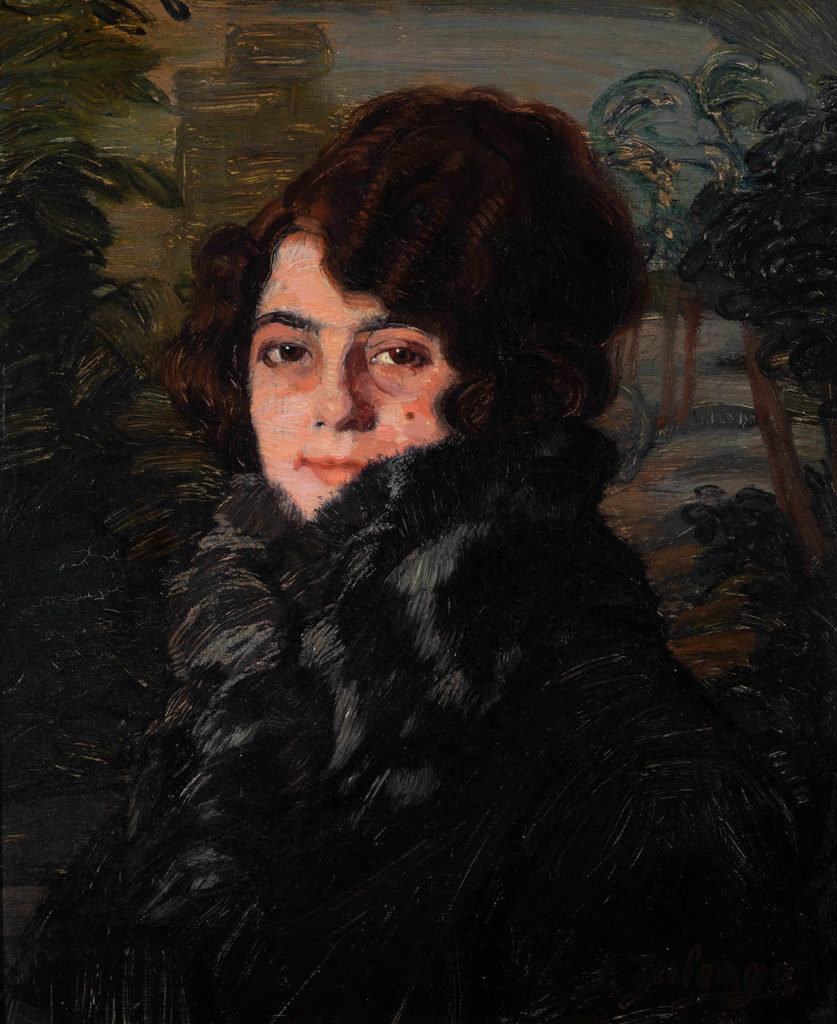Ignacio Zuloaga and Paris.
The Basque painter Ignacio Zuloaga (1870-1945) He arrived in the French capital in 1889 and, as a good end-of-the-century bohemian, first settled in Montmartre , where he meets Basque and Catalan country artists. On your recommendation He enrolls in one of the free academies run by the eclectic painter Henri Gervex, who welcomes avant-garde artists in his studio and where he meets Utrillo, Casas and Rusiñol, all members of the Barcelona group “Els 4 Gats”.
Later he joined the study of Eugène Carrière, who beyond a teacher in the formal sense, would be gZuloaga’s friend and guide during his early Parisian years. Parallel to the more or less directed training in the free academies, an artistic impregnation that comes from frequenting more accomplished artists such as Degas or comrades such as Louis Anquentin, Toulouse Lautrec and Maxime Dethomas makes itself felt. It is a time of artistic exchange of great intensity and personal definition for Zuloaga, which would mark his style and define the projection of his career.
After an intermezzo back in Spain between 1895 and 1901, Zuloaga returned to Paris after the resounding success of his work “My uncle Daniel and my cousins” at the Salon of 1899, which was acquired by the State and destined for the Luxenbourg Museum. (now in the Musée d’Orsay). This first success would mark the beginning of the fame and recognition that the painter would enjoy in France: in addition to numerous exhibitions in private galleries, commissions of the gentry and aristocracy, he exhibited in eight Salons until 1914 and consigned paintings to the Louis Le Barc gallery. de Boutteville, who had been a promoter of Van Gogh, Gaugin, Redon and the Nabis.
In his years in the French capital, Zuloaga feels an affinity with the work of avant-garde artists such as Manet, Degas and Rodin. His circle of friends and acquaintances includes Degas Cezanne, Gaugin, Emile Bernard, and Matisse. In 1905 he even invited Auguste Rodin to visit him in Spain and together they began a tour of Madrid, Toledo and Andalusia in 1905. He also frequents intellectual circles where he befriends people such as the French nationalist Maurice Barrès and the German writer Reiner Maria Rilke. On a personal level, it is also in Paris where he meets his future wife Valentine, sister of his friend the painter Maxime Dethomas.
Setdart will soon auction a portrait of Madame Lolita Pineaud, wife of the then CITROËN chief mechanic Maurice Penaud, belonging precisely to this Parisian period of effervescence. The simplicity and elegance of the composition, the contrasts of light and shadows, as well as the attention to details of the model’s physiognomy stand out. It is a portrait with great psychological depth and freshness, despite the use of a rather dark color palette. It is compositions like these that made Zuloaga successful as a portraitist for the well-to-do classes.
Zuloaga never leaves Paris completely. France is the first place that recognizes your talent, even before your homeland. Over the years he would spend long periods in the French capital to paint during the winter and part of the summer, the rest of the time he would divide it between Eibar, Segovia and Madrid. His fame crosses the borders of Europe and enjoys international recognition throughout Latin America and the United States.




